In July 1966, as the Gemini program continued in its second year of crewed missions to develop techniques required for the Moon landing, spaceflight testing of components for the Apollo program proceeded in parallel. The primary goals of the Apollo-Saturn AS-203 mission, the second uncrewed Saturn IB flight, included observing and testing the behavior of the supercold liquid hydrogen fuel in the rocket’s S-IVB second stage. A slightly modified version served as the third stage in the larger Saturn V Moon rocket and engineers needed to understand the behavior of liquid hydrogen in microgravity to ensure that the stage’s engine would restart once in orbit–a function critical to the success of lunar missions. The flight did not carry an Apollo spacecraft, the rocket topped off instead by an aerodynamic nose cone. Launched on July 5, the six-and-a-half-hour AS-203 mission met all of its objectives.
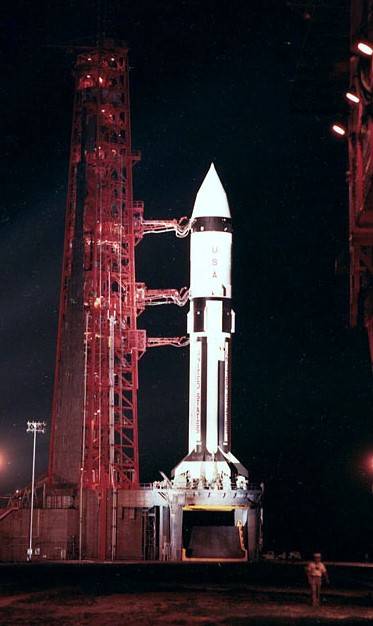
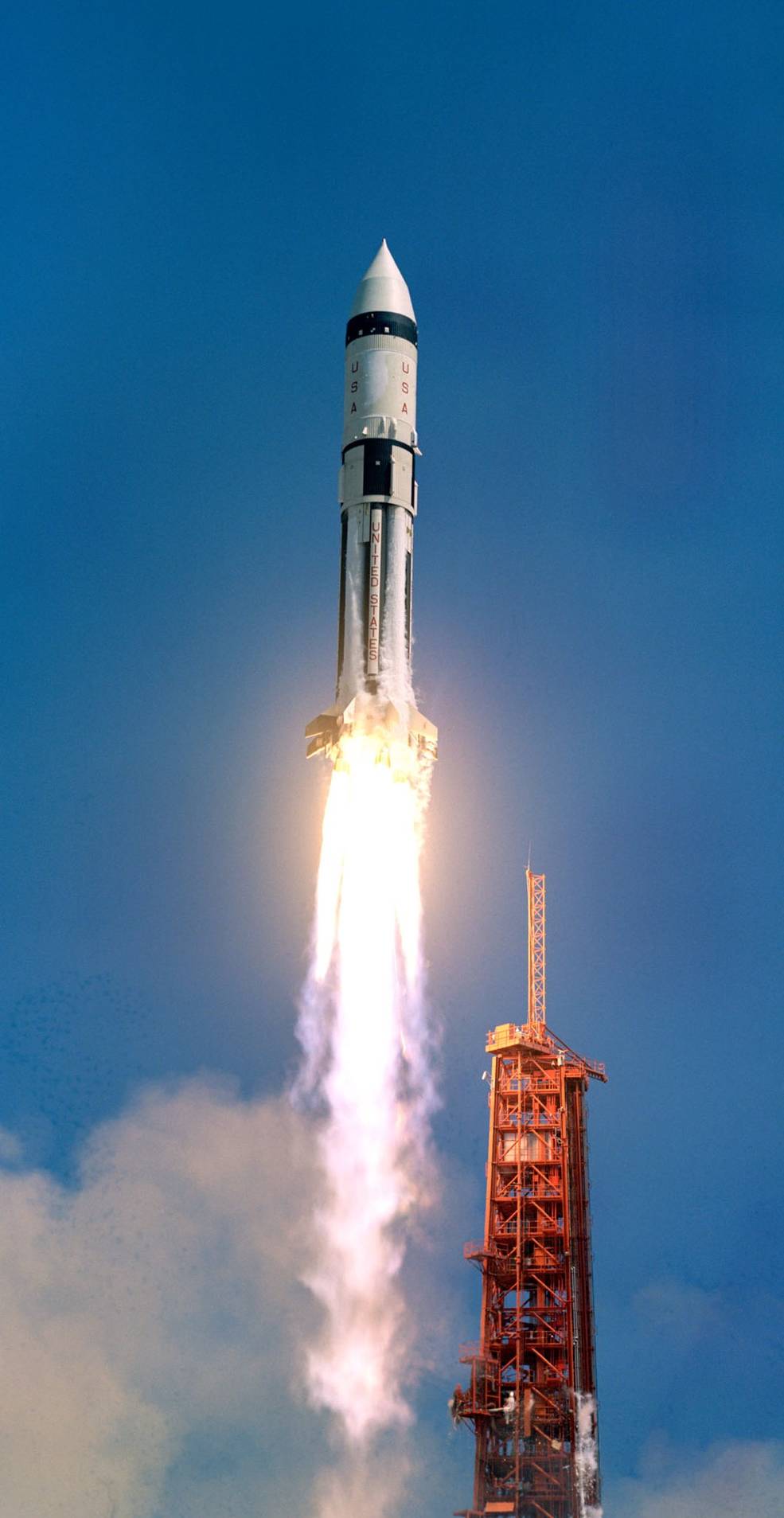
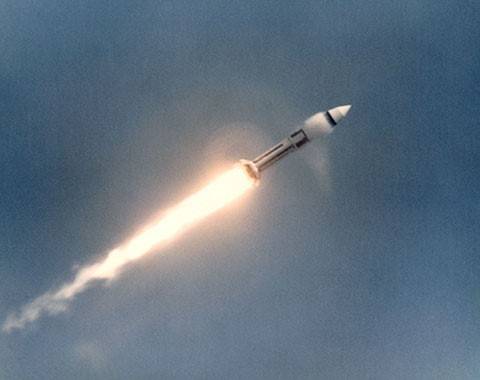
Left: The Saturn IB rocket for the AS-203 mission stacked on Launch Pad 37B at Cape
Kennedy Air Force Station, now Cape Canaveral Space Force Station, in Florida.
Middle: Liftoff of the Saturn-IB on the AS-203 mission. Right: A tracking camera
captures a shockwave coming off the rocket’s nose cone during the first stage burn.
Ground crews at Launch Pad 37B at the Cape Kennedy Air Force Station, now the Cape Canaveral Space Force Station in Florida, began stacking the Saturn IB rocket for the AS-203 mission in April 1966. This mission carried no Apollo spacecraft, replaced by an aerodynamic nose cone that remained attached to the rocket’s upper stage for the duration of the mission. Scientists installed an experiment to aid in future fuel cell development to test the behavior of liquid nitrogen in microgavity inside the nose cone. With AS-203 on Launch Pad 37B, the transfer of the Saturn 500F rocket to Launch Pad 39A on May 25, and the addition of an Apollo spacecraft atop the AS-202 Saturn IB on Launch Pad 34 on July 2, for the first and only time in history three fully assembled Saturn rockets stood on their respective launch pads. But only for three days, as on July 5, AS-203 lifted off to begin its mission, the first Saturn IB launch from Pad 37B.
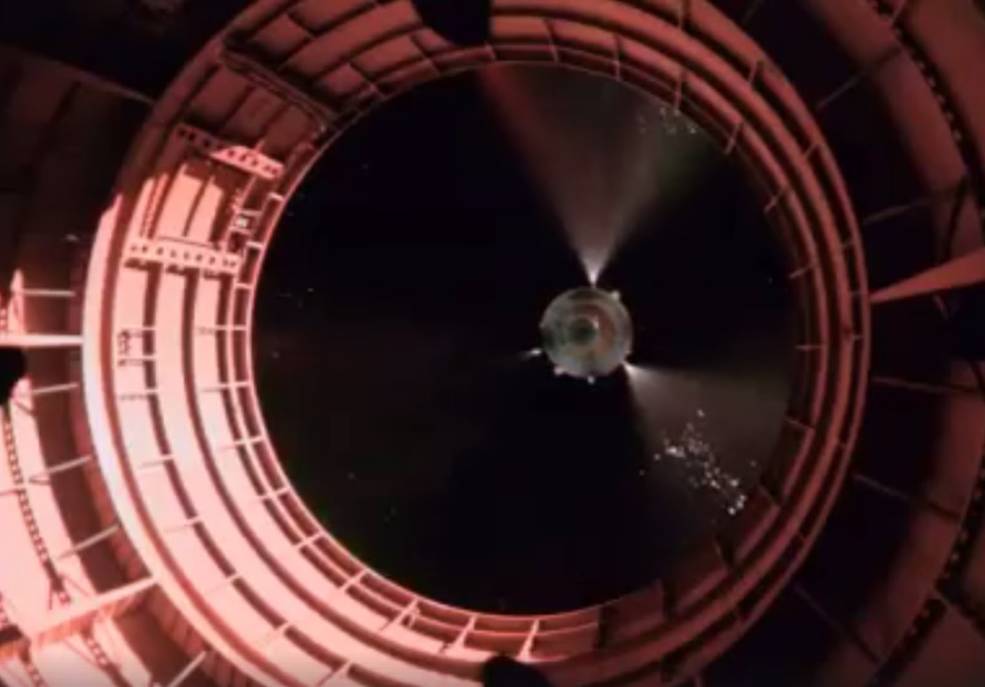
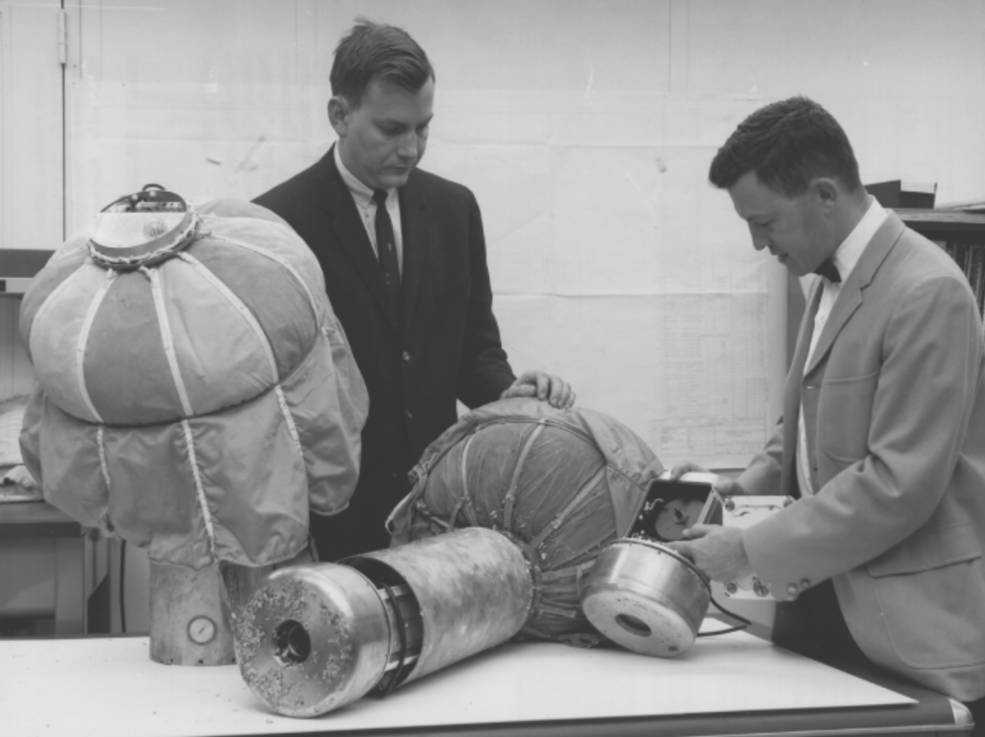
Left: Still image from a film of stage separation during the Apollo AS-203 mission recorded
by an ejectable and recoverable camera pod inside the top of the rocket’s first stage.
Right: Engineers examine camera pods like the ones flown on Apollo AS-203.
The Saturn IB’s first stage burned for just over two minutes after which the S-IVB second stage ignited to continue the ascent. Two cameras mounted aboard pods inside the top of the now-jettisoned first stage recorded the separation. After completing the filming, the camera pods ejected from the stage and parachuted into the Atlantic Ocean. Recovery forces retrieved only one of the pods from the ocean but the film provided dramatic footage of the ignition of the second stage engine. After 7 minutes 13 seconds of flight, the second stage engine shut off and the S-IVB with its attached nose cone entered a nearly circular 118-mile orbit around the Earth. At 58,500 pounds, it was the heaviest U.S. satellite orbited up to that time. That mass included 19,000 pounds of liquid hydrogen remaining in the S-IVB’s fuel tank.
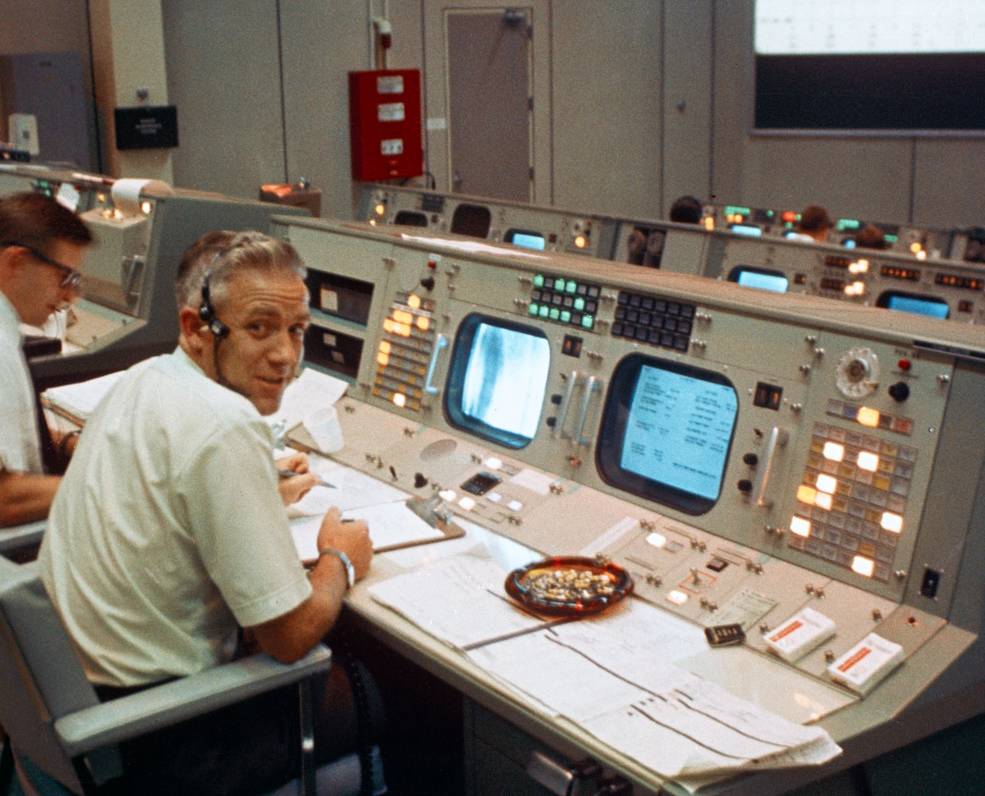
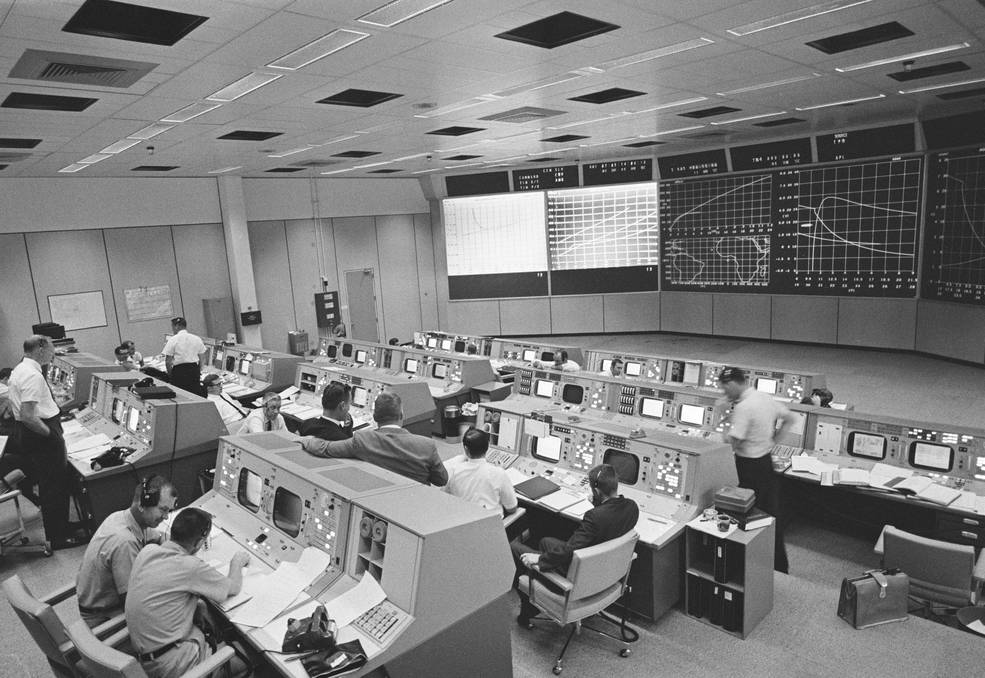
Left: In the Mission Control Center (MCC) at the Manned Spacecraft Center, now NASA’s
Johnson Space Center in Houston, Flight Director John D. Hodge monitors the progress
of the AS-203 mission. Right: Overall view of the MCC during the AS-203 flight.
A team of controllers led by Flight Director John D. Hodge monitored the AS-203 flight from the Mission Control Center at the Manned Spacecraft Center, now NASA’s Johnson Space Center in Houston. To evaluate the behavior of the liquid hydrogen and its interactions with various design elements of the tank, such as baffles and screens, engineers mounted two television cameras inside the fuel tank. During the first orbit, controllers received images from only one of the two cameras, the other having failed before launch, but they clearly showed that after some sloshing during the engine burn, the hydrogen fuel settled to the bottom of the tank as expected from slow steady venting of gases from the tank providing sufficient forces. Different venting conditions caused the fuel to slosh as predicted by preflight models. Engineers simulated a restart of the S-IVB’s engine, verifying the chilldown and other required procedures. The tests gave managers confidence that the engine would perform as expected during the first flight of the Saturn V rocket, flown as Apollo 4 in 1967. Other flight test objectives, such as operation of the Instrument Unit to control the rocket’s flight and attitude and the liquid nitrogen experiment, were also successfully completed. By the fourth orbit, venting of gaseous hydrogen had raised the rocket stage’s orbit to 126 by 135 miles, and engineers halted the venting. This built up pressure inside the tank, and two minutes following receipt of the last set of telemetry data at 6 hours 20 minutes into the flight, during the start of the mission’s fifth orbit, the stage exploded. Tracking radar detected a debris cloud that soon burned up on reentry over the Carribean Sea, ending the successful AS-203 mission and clearing the way for the first flight of the Saturn V rocket.
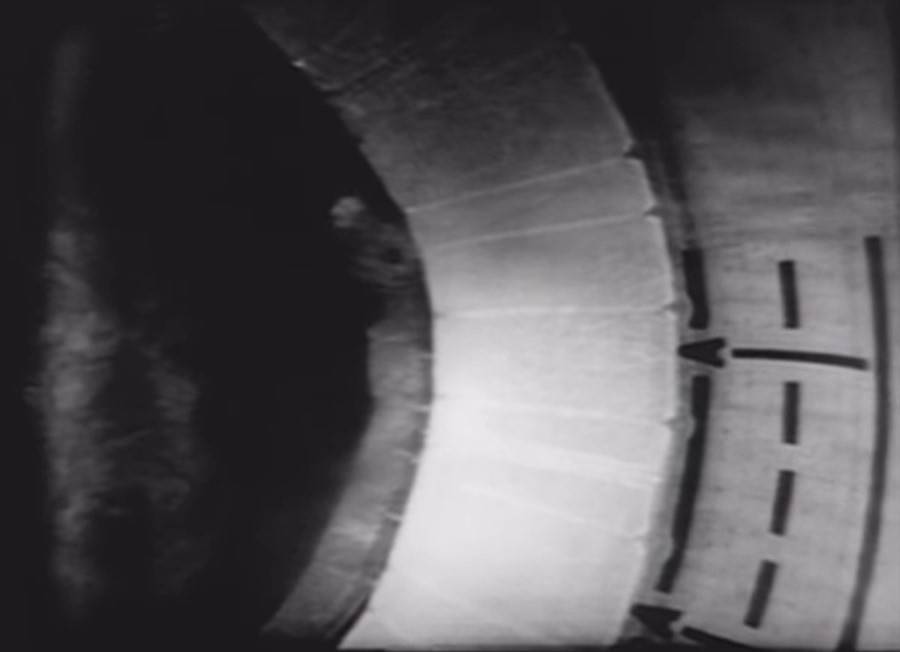
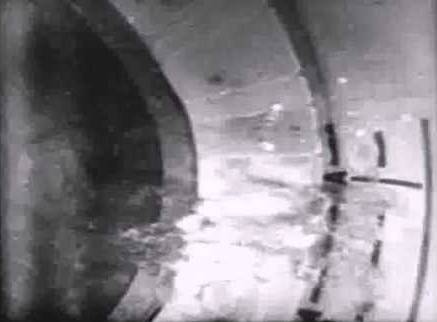
Two images from the television camera inside the Apollo AS-203 second stage
hydrogen tank during a quiescent period, left, and during sloshing.
Following the successful AS-203 mission, NASA planned for one more uncrewed Apollo Saturn-IB flight, AS-202 in August 1966, to certify the spacecraft’s heat shield, followed by the first Apollo mission to carry a crew in the first quarter of 1967. Those plans changed tragically on Jan. 27, 1967.
To be continued…


























